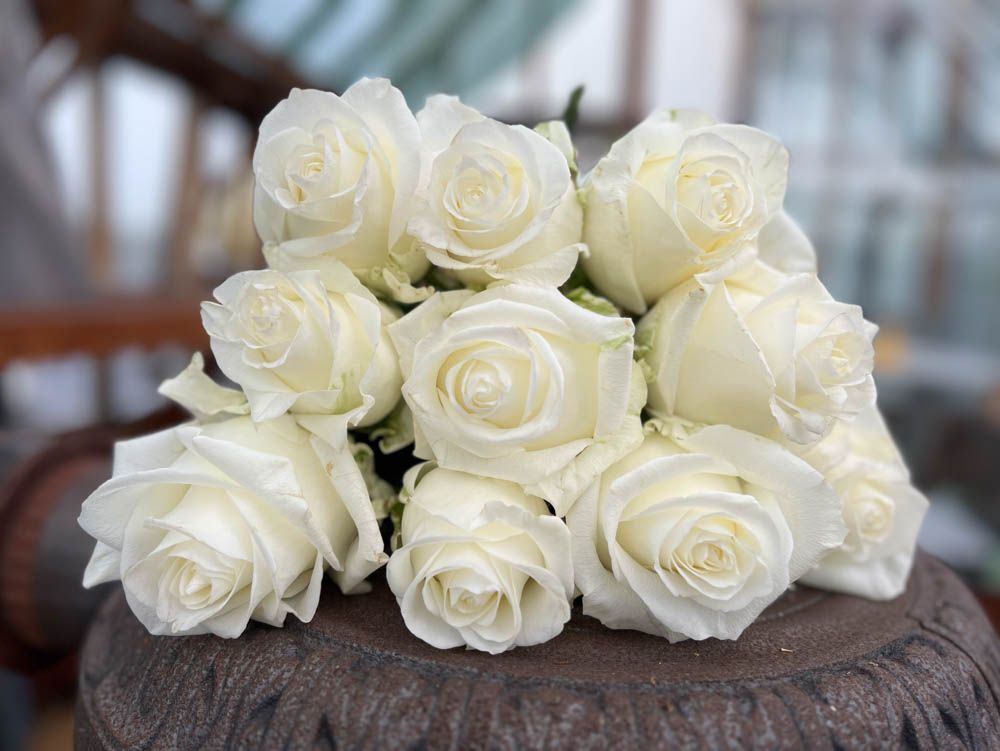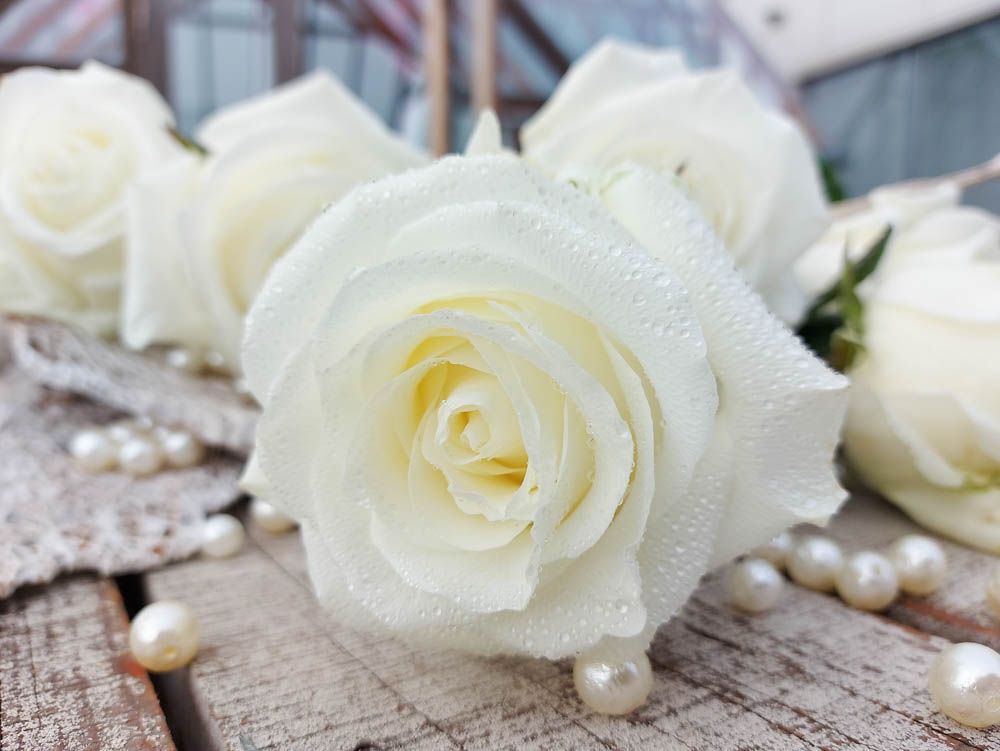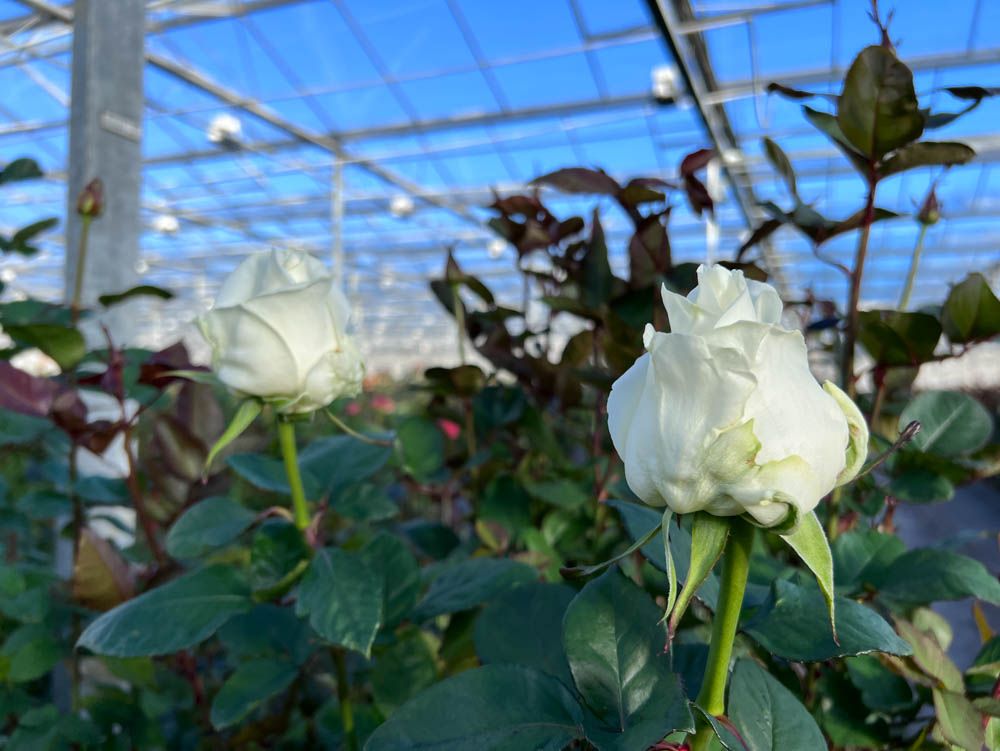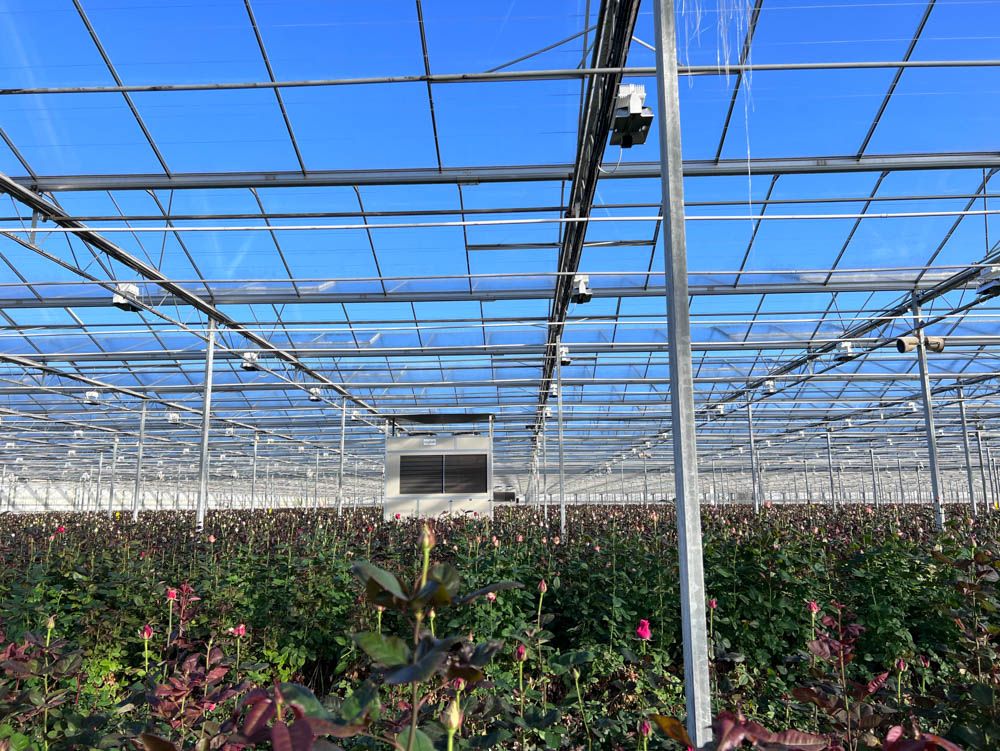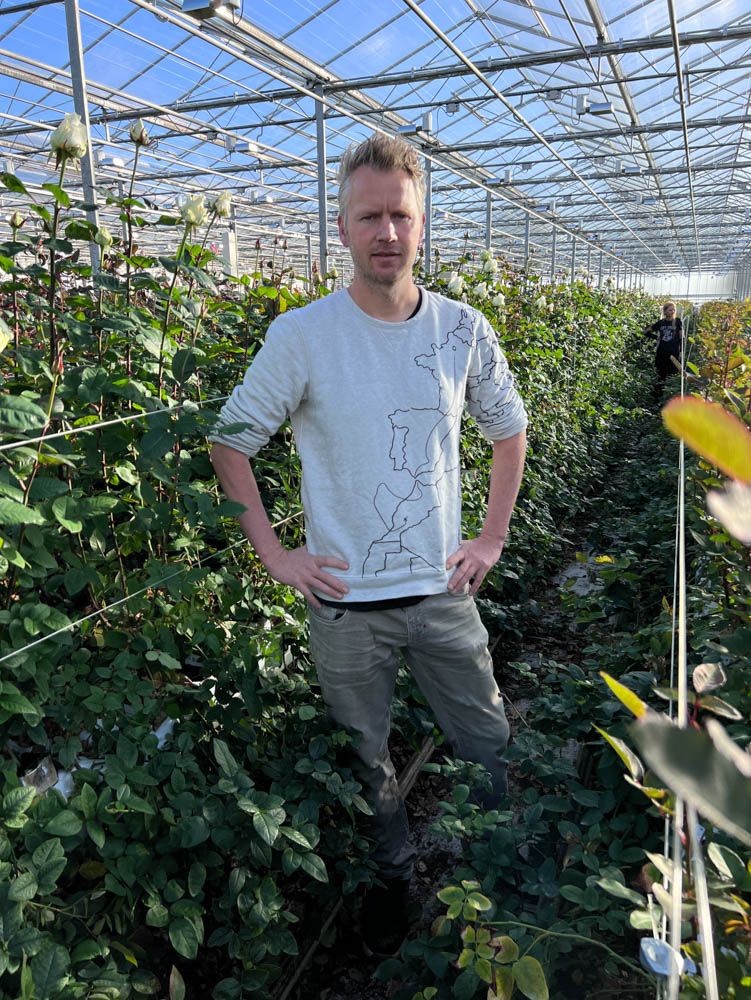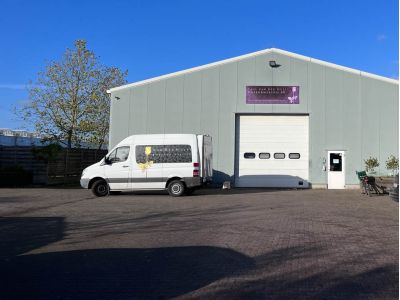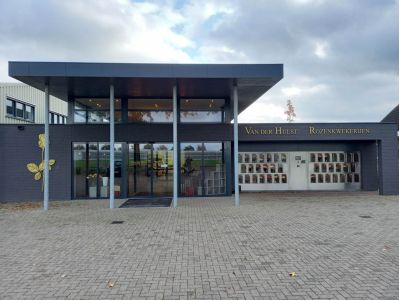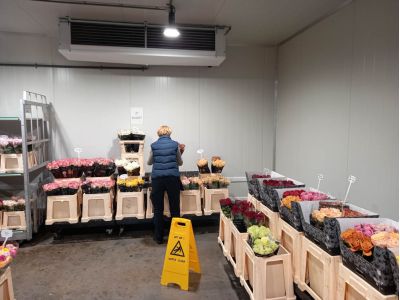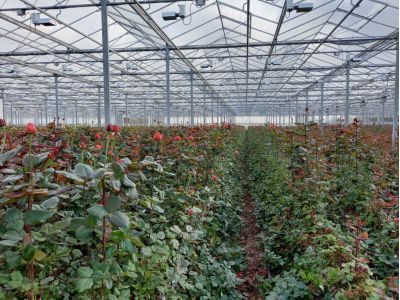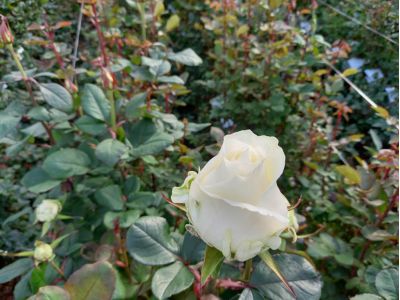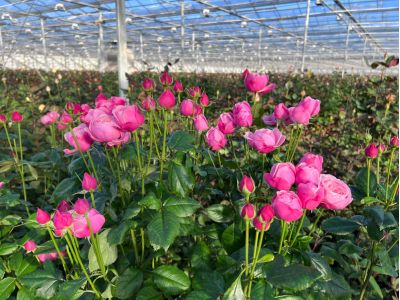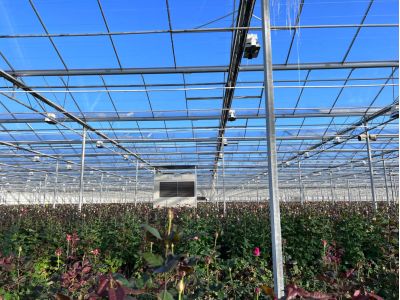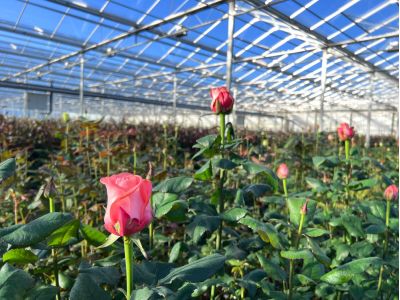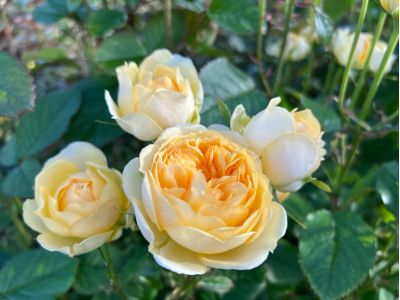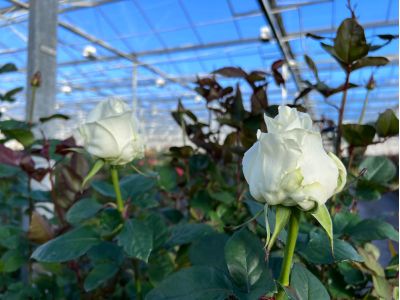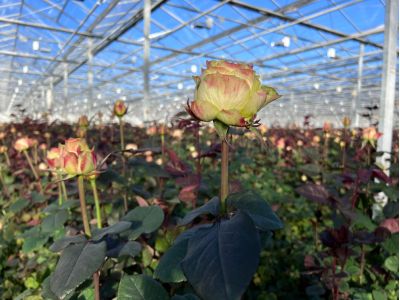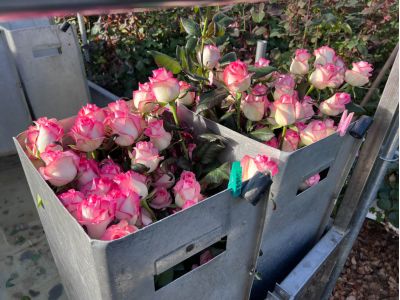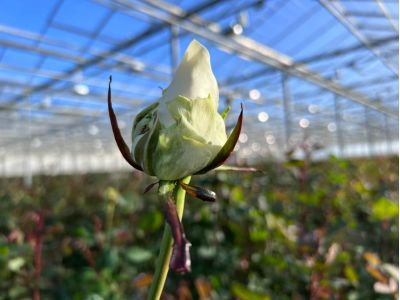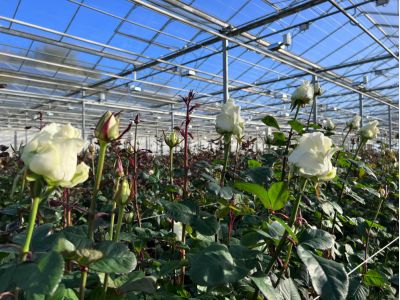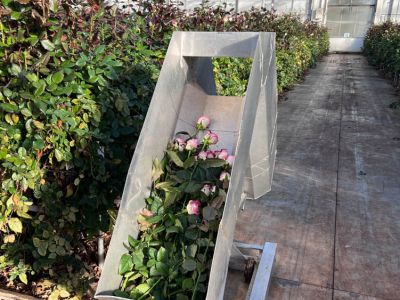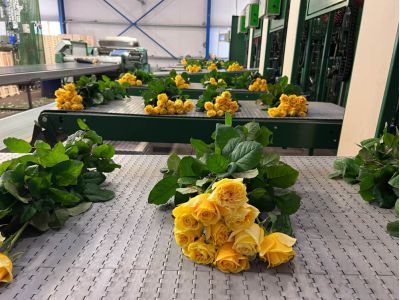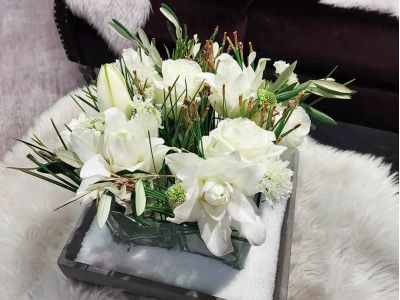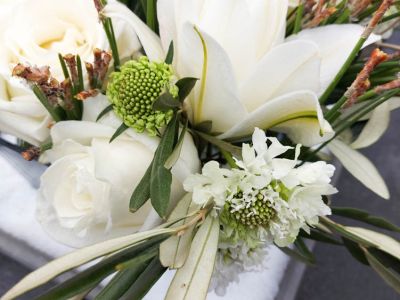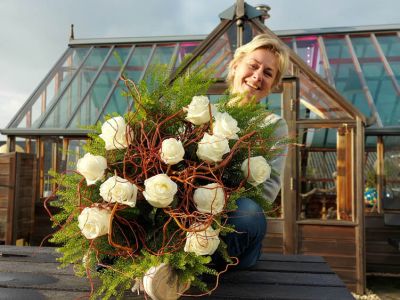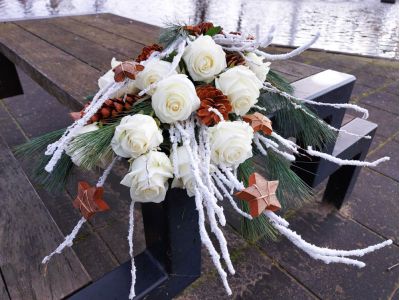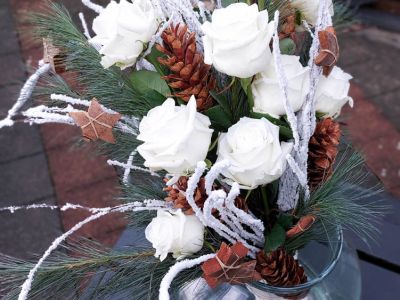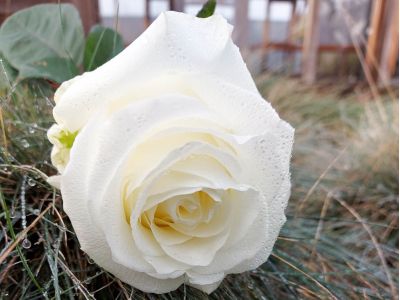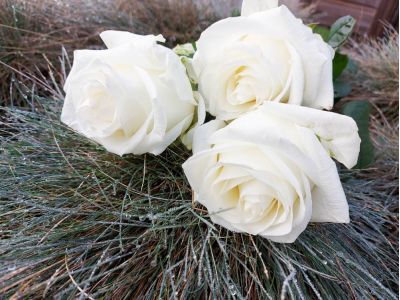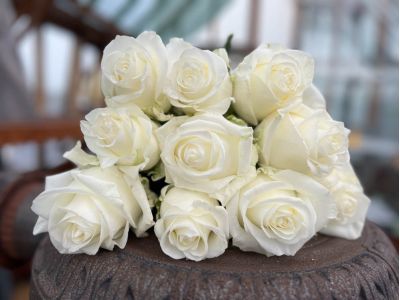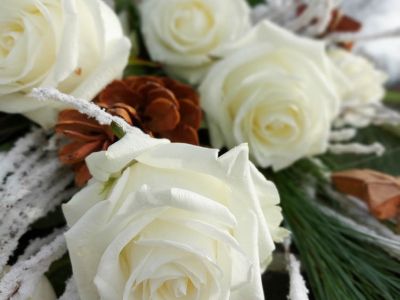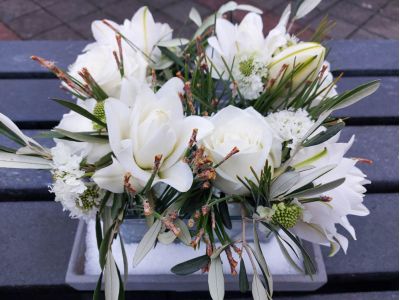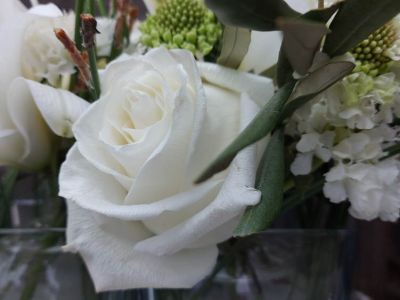Rosa Noëlia

Calendar
Because production will be lower in the coming months, Noëlia is not available every day. From March next year, another 6.500m2 will be planted in various phases. Then Noëlia is fully and exclusively available at Van der Hulst.
In the spotlights
The high gas price is a daily recurring topic of conversation in the industry. Nevertheless, growers are finding solutions to grow their products in the colder months, with less energy! We came into contact with Van der Hulst Rozenkwekerijen last November, during the Tradefair. They introduced their newest rose there: 'Noëlia' is bright white, has a beautiful large head and not unimportantly, it can be grown at a lower temperature without losing quality! We visited Paul van der Hulst who told us all about this beauty and his solution for the high gas price.
The Van der Hulst family
Van der Hulst Rozenkwekerijen is, like many horticultural companies, a real family business. The company was founded in 1975 by Sjaak and Cleta van der Hulst. Thirty years ago, the company moved from Den Hoorn to a new location in Limburg, where the company has grown in recent years to nine hectares, divided over three gardens. The sons Mark, Koen and Paul each run their own garden, daughter Linda takes care of the finances and personnel. Sjaak and Cleta left the company in 2014, but they can still be found in the company every day. Cleta is responsible for the shop, where consumers can buy flowers. Sjaak is the jack of all trades and divides his time between the three companies.
Noëlia
Noëlia is new in the Van der Hulst range. Where other growers had doubts about the leaf shape, Paul and his brothers took the gamble to pick up the variety. They did see possibilities with this variety. This turned out to be a very good bet! Noëlia is bright white, has a large bud and she opens beautifully. It is therefore very well received by the market. This rose is fantastic to work with for bridal work and events. “She is certainly not a replacement for another white variety,” says Paul, “but really complements the current white range. There isn't that much real white.'
In addition, Noëlia has the great advantage that it naturally grows very well. It is mildew resistant and requires little control. Even now that the temperature in the greenhouse is a few degrees lower and there is less lighting, the quality of Noelia is very good. A very sustainable rose!
This year Paul has 2.500m2 of Noëlia. Because production will be lower in the coming months, Noëlia is not available every day. From March next year, another 6.500m2 will be planted in various phases. Then Noëlia is fully and exclusively available at Van der Hulst.

Cultivation
The Van der Hulst brothers stand for quality, durability and are distinctive with their wide range in various colours. They grow seventeen varieties, fifteen of which are exclusive. All varieties have already been selected in the past for their ability to grow with less energy, as sustainably and naturally as possible. Van der Hulst is MPS A+ AND MPS GAP certified.
Drygear
When the energy crisis started last year, Van der Hulst, like many other horticulturists, put the greenhouses on cold, but that didn’t work out well. Since then the brothers looked for other solutions to be able to continue producing in the winter this year, with less energy, but with a climate that is as stable as possible. And it worked! There is less lighting, cultivation is slower, production is slightly less, but the quality is high!
Substantial investments have been made in large air dryers to lower the humidity in the greenhouse. Moist air takes more energy to heat than dry air. These drygear devices are spread throughout the entire greenhouse, one per 3.500m2.
On a humid day, they process up to 50 liters per hour, which is then stored and reused to water the roses.
The moisture in the greenhouse is reduced by 10% to 15%. In addition, heat is also released from the drygear, which heats the greenhouse by two to three degrees. The extraction of the moisture creates air movement in the greenhouse, creating a good climate for the roses. This drygear system causes a 40% decrease in gas use.
Where the climate used to be controlled automatically, the boys now have to check the weather every day, how much lighting should be used and whether the screens should be opened or closed. A fun challenge, back to your own feeling and growing with understanding.
Own cutting material
Paul has 1.000m2 of test roses in the greenhouse. The distinctive varieties are selected from here, which are then extensively tested for vase life, transport and all other criteria that a good rose must meet. After Van der Hulst had to deal with the Ralstonia bacteria a few years ago and had to evacuate the greenhouse as a result, the men decided to make their own cuttings. This way they can choose their own rootstocks, on which to graft the cuttings, so they can start completely disease-free.
Father Sjaak says with a laugh that they see a challenge in varieties that are not noticed by others. They then continue testing with this variety, another stem, another rootstock, 'messing around' until the right match is made and a good product is created.
Growing is trial and error. Even now, with the energy crisis, the Van der Hulst men remain positive. Just like after the Ralstonia, investments are again being made in innovation in order to benefit from it in the future, so that even more sustainable and natural cultivation can take place in a stable climate.
FloraPodium, 15 December 2022






